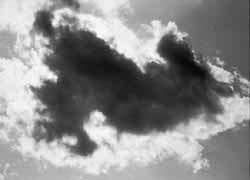|
[Subjective and Objective, Life as Art, Repeatability]
 Not by its own nature, but by human nature, which
turns any image into a symbol, has photography become a symbolic form and an art. One should clearly understand, in regard to all art, that the art is in the beholder, not necessarily in the work itself;
the aesthetic response is purely subjective. What is art for one person may evoke no response in another. Not by its own nature, but by human nature, which
turns any image into a symbol, has photography become a symbolic form and an art. One should clearly understand, in regard to all art, that the art is in the beholder, not necessarily in the work itself;
the aesthetic response is purely subjective. What is art for one person may evoke no response in another.
In the 19th century, artists had become preoccupied with verisimilitude. The prime criterion for art was the imitation of nature.
By the 1850’s, many painters and engravers were forced to take up photography because, however technically adept they were as “artists,” they could not compete with the lens’s precision of rendering. (See Ivins, Prints and Visual Communication, p. 178.) Once photography had cornered the market on verisimilitude, the popular notion
of art had to be redefined. Art is a state of mind.
- “Perhaps the great revolution produced by photography was in the traditional arts.
The painter could no longer depict a world that had been much photographed. He turned, instead, to reveal the inner process of creativity in expressionism and in abstract art.” (McLuhan, Understanding Media, p. 174.)
- “…it is arguable that the existence of photography may well have liberated art from
certain mimetic or imitative functions, so that painting, for instance, moved towards those modes described as Impressionist, Symbolist, Expressionist, Constructivist and Abstract.” (Susan Sontag, On Photography, pp. 6-7.)
- “The photograph has made it obvious that what for four centuries the European world had acclaimed as purpose and beauty in art was no more than a peculiarly
local prejudice about subject matter and mode of presentation.” (Marina Vaizey, The Artist as Photographer, p. 11.)
- “Although there is a sense in which the camera does indeed capture reality, not just
interpret it, photographs are as much an interpretation of the world as paintings and drawings are.” (Susan Sontag, On Photography, pp. 6-7.)
- “Two kinds of photographers, reflecting the double aspect of photography, made the earliest images; on the one hand there were chemists, optics engineers and all
those who liked to dabble in science; on the other, former painters and art students. Yet it is by no means easy to distinguish the products of one intention--to record
the visible world--from the products of the other--to create beautiful pictures.” (Alan Thomas, Time in a Frame, p18.
|
|

 Not by its own nature, but by human nature, which
turns any image into a symbol, has photography become a symbolic form and an art. One should clearly understand, in regard to all art, that the art is in the beholder, not necessarily in the work itself;
the aesthetic response is purely subjective. What is art for one person may evoke no response in another.
Not by its own nature, but by human nature, which
turns any image into a symbol, has photography become a symbolic form and an art. One should clearly understand, in regard to all art, that the art is in the beholder, not necessarily in the work itself;
the aesthetic response is purely subjective. What is art for one person may evoke no response in another.